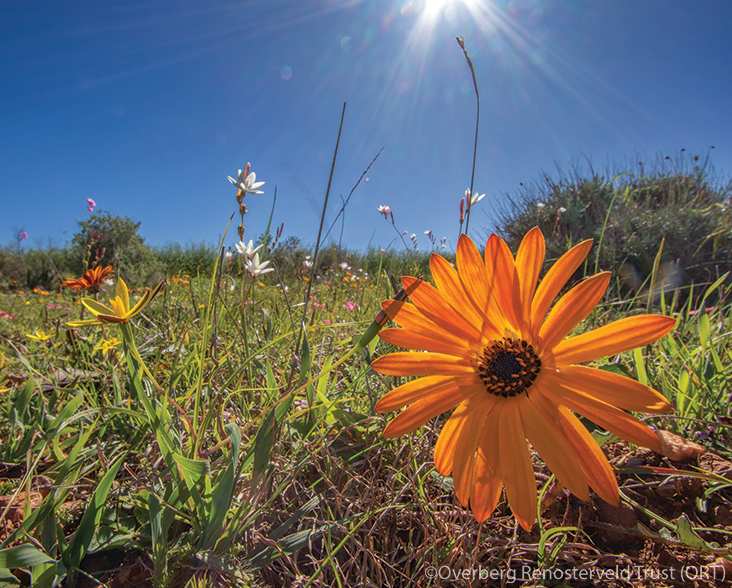South Africa is home to an astonishing amount of biodiversity, on land and at sea. 10% of all known plant species are found here, many restricted to an area of the Cape that comprises one of the world’s six floristic kingdoms. The waters around South Africa harbour around 15% of the world’s marine species, while the country’s range of terrestrial biomes range from forest and grassland to desert, savanna, and the unique bushveld and fynbos.

SOUTH AFRICA
YEARS OF SUPPORT 0
HECTARES FUNDED 0 (318 acres)
HECTARES CO-FUNDED 0 (917 acres)
Protected areas like the famous Kruger National Park provide habitat for some of Africa’s most iconic animals, including cheetah, ostrich, hippo, zebra, giraffe, and the Big Five. Meanwhile, the meeting of major oceans and current systems offshore makes South Africa a prime destination for hungry sharks, seals, whales, dolphins, penguins, and seabirds. This is also a place that boasts a high rate of endemism, with 56% of its amphibians and 70% of its invertebrates found nowhere else on Earth.
In a 2019 study, the South African National Biodiversity Institute found that nearly 14% of the country’s species, and half of its ecosystems, are under threat. One of the major pressures comes from habitat loss and degradation driven by mining, agriculture, urban development, and other land use. Connecting existing protected areas will be key to ensuring the survival – and continued genetic diversity – of South Africa’s vibrant wildlife.
Our partners in South Africa
Current projects in South Africa
Greater Ukuwela Nature Reserve
Explore the Greater Ukuwela Nature Reserve with our interactive map
Greater Ukuwela Nature Reserve
Located on South Africa’s ‘Elephant Coast’, the vision for this project is to secure the gap between two large protected areas, creating a single contiguous protected landscape almost 1 million acres in size. The Greater Ukuwela Nature Reserve will serve as a crucial wildlife corridor, providing habitat for over 1,200 species including lion, leopard, elephant, cheetah, Painted Dog, and the Critically Endangered Black Rhino.
Once earmarked for pineapple production, the land here now has the highest level of legal protection under South Africa’s Protected Areas Act. Part of the reserve is utilised by local people for fishing, cattle grazing, and reed and water collection. Our project partner, Wild Tomorrow, is heavily involved in community work in and around the reserve. Food, employment, teacher stipends, and even a brand new school have all been provided since they began work here.


Overberg Renosterveld Reserves
In South Africa’s Overberg region, lowland renosterveld is one of the world’s richest plant habitats, home to over 600 species within the Cape Floristic Region. Many threatened bird species also find refuge here, including the Endangered Black Harrier (Circus maurus) and Cape Vulture (Gyps coprotheres).
Despite its global conservation importance, renosterveld receives little official conservation protection, with over 95% lost to agriculture. Many of the remaining areas are small and isolated, with fewer than 60 renosterveld remnants over 100 hectares (247 acres) in size.
With WLT support, Overberg Renosterveld Trust (ORT) is working to protect what remains through land purchases, conservation easements with farmers, and conservation management. To date, ORT has safeguarded two large properties together totalling close to 1,000 hectares (2,471 acres). In addition, ORT leads biodiversity monitoring, education, and research – protecting nature while building a future for both wildlife and local communities.
Key species protected by WLT projects
-
African Civet (Civettictis civetta)
-
African Elephant (Loxodonta africana)
-
African Leopard (Panthera pardus pardus)
-
Hippopotamus (Hippopotamus amphibius)
-
Lion (Panthera leo)
-
Southern Ground-Hornbill (Bucorvus leadbeateri)
-
Spotted Hyena (Crocuta crocuta)
-
Woodward’s Barbet (Stactolaema olivacea woodwardi)
